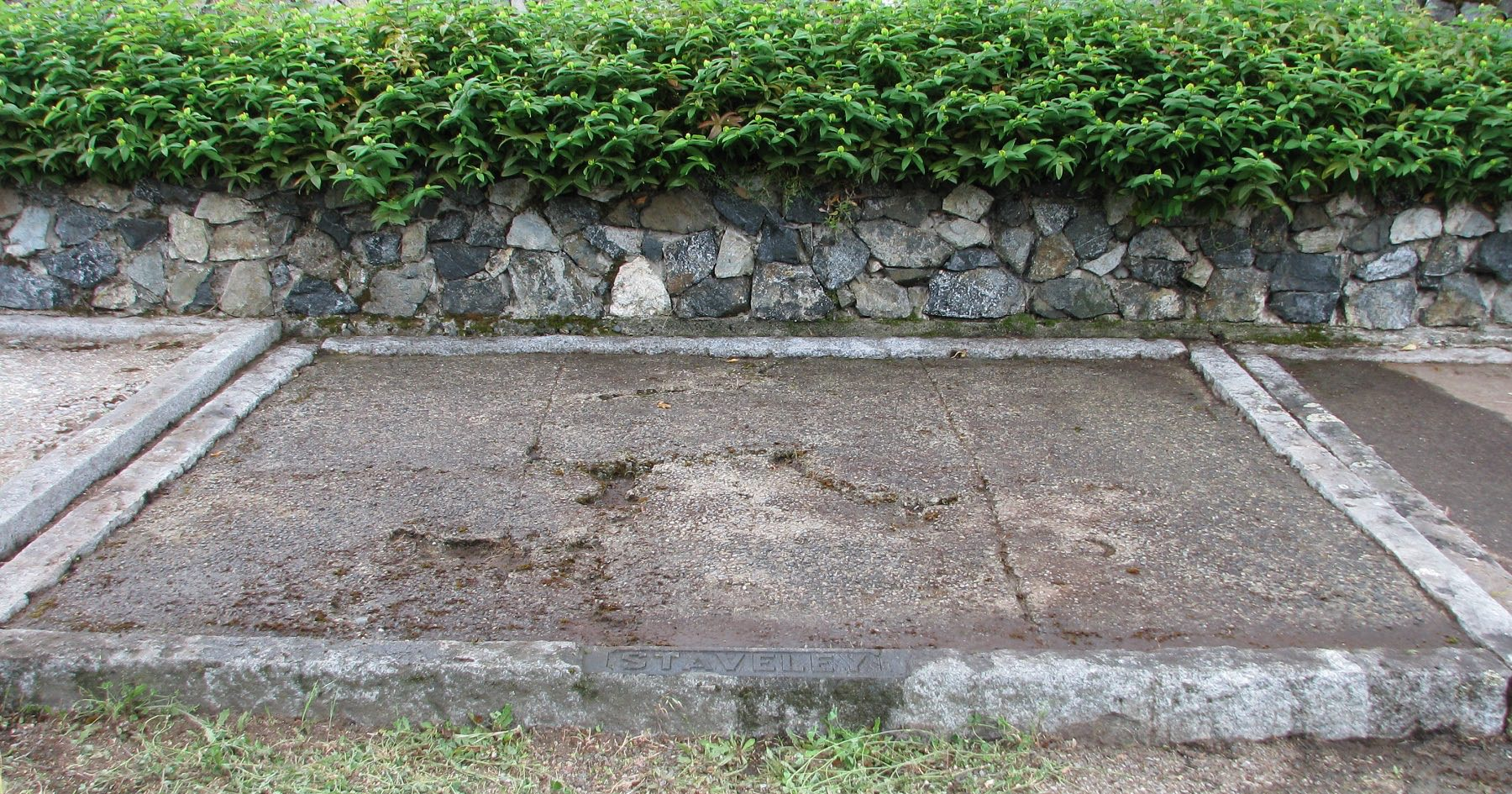I have recently learned a piece of family history many years after the event. I learned that two grave plots in St Luke Cedar Hill cemetery had been unclaimed for many years. The cemetery committee was seeking descendants of the original purchaser.
My great-grandmother Leonie Staveley is buried in the central plot and, beside her, two grave plots are still empty. The two unused grave plots were apparently reserved for Leonie’s two daughters, Jane and Olive. They were to lie next to her, on either side. But Jane and Olive chose to be buried elsewhere. What is the story here?
I know from family anecdotes that my great-grandmother was quite the Victorian tyrant. She had five daughters, Jane, Eleanor, Ethel (my grandmother), Olive and Anna, called “Treasure” because she got things done. Eleanor, Ethel, and Anna had married, but Jane was plain and Leonie chased away any suitor who came near Olive. She needed two dutiful daughters to help her with her Ferndale Tea Garden in Gordon Head. Possessing an ample income, she had commissioned a Craftsman-style cottage for her Tea Garden, where, during the 1920s, she and her daughters — “as a hobby” — served tea on the veranda, in the sunroom and in the garden. By appointment only.

Leonie died in 1934. She had bought the triple plot for herself and her two daughters. But Jane died in 1975 and Olive in 1983, and both their ashes were scattered behind the chapel in Royal Oak Burial Park. The lioness in winter now rests alone, bereft of her cubs. That is the story of those two empty graves. I like to think that Jane and Olive’s decision to forgo their appointed resting places was an act of relative spiritual freedom on their part. They were more than mere appendages.
In respect to a third empty grave: at Easter we have the story of the empty tomb. Why is this tomb empty? Because its occupant lived a life of absolute spiritual freedom. Resurrection is spiritual freedom even over death. “He is not here; for he has been raised, as he said.” (Matthew 28: 6)
If you don’t like the word “absolute” you may use “definitive” or “constitutive” of spiritual freedom. Resurrection is God’s promise of salvation for all, while not overlooking the claims of justice upon us. We do not usually think of the story of the empty tomb as a visionary account. It is a record of an absence, not of a positive appearance.
The initial accounts of the risen Christ were of visionary experiences. From Paul, we learn (1 Cor. 15: 3-11) that the first understanding of an “apostle” was one, male or female (Junia), who had witnessed Christ’s appearance in accordance with the scriptures. The reference is perhaps to Ezekiel 8: 1-4. Christ as risen was perhaps an ecstatic experience for many, for the five hundred.
Your brief glimpse of a risen Christ makes you an apostle of a wild hope! The story of the empty tomb, however, is not a record of a presence but of an absence, a discovering of an emptiness. The original ending of Mark is very stark: despite the reassurance of the young man, the women flee in fear from the empty tomb. “He has been raised; he is not here.” (Mark 16: 6)
A positive vision of course can be exhilarating but a negative vision of emptiness may be very frightening. But I refer back to the empty graves of Jane and Olive. My reaction was an uplift of my spirit when I heard about those empty graves. I realized that in that symbolic act, they had chosen their own destiny.
And I think that is what the empty tomb signifies. It means to tell us that Jesus has chosen his own destiny apart from all other designs on his body. “He is not here but has risen.” (Luke 24: 5)
It is thought that the empty tomb narrative may have been constructed to counter the charge that the disciples stole the body. But the issue is deeper than a missing body. The issue is the spiritual freedom that Jane and Olive showed about their bodies. In freedom, we dispose of our own bodies.
While alive as a Jew, Jesus bodily lived a life of absolute spiritual freedom. Jesus bodily announced the kingdom as the living reign of God among us, a reign exercised through an open invitation to accept this reign’s forgiveness and sharing of spiritual power. God was no withholder! God does not begrudge us the best, and in this spirit, we can freely offer our best in healing and forgiveness.
Religious authority and political power, however, want the worst for Jesus. We may not all have to deal with a tyrannical mother, but we all must deal with religious authority and political power, which function by allocation and withholding of social good. Jesus, however, neither condemns nor endorses any structure of religious authority and political power. He threatens them by not fearing them. All the same, they will have blessing beyond measure under God’s reign, if they seek justice, love kindness and walk humbly with their God. (Micah 6: 8)
But religious authority and political power live and die by set measures and intricate sanctions, so Jesus must die. He dies not with curses but words of forgiveness. Final judgement is passed on them. “It is finished.” (John 19: 30) These structures can never again claim the absolute authority of God.
Christ’s definitive act of spiritual freedom for Paul was his willingness to die even for his enemies. (Romans 5: 10) It “crosses” our predisposition for fear and exclusion (flesh) and sets the template for spiritual freedom for us as spiritual beings. In patriarchal categories, God does not withhold even his son, so we are now free to offer our groaning hearts to the spirit’s healing.
The empty tomb, therefore, poses the great question of absolute spiritual freedom. Freedom from our predisposition for fear and exclusion. Freedom for love and forgiveness. Can we answer? Work it out. This freedom extends beyond all limiting human structures, whether they be patriarchal or feminist; religious or atheist; vegan or omnivorous. Easter chocolate, of course, transcends all categories.
This article was originally published in the St Luke Cedar Hill quarterly magazine The Prescription.


